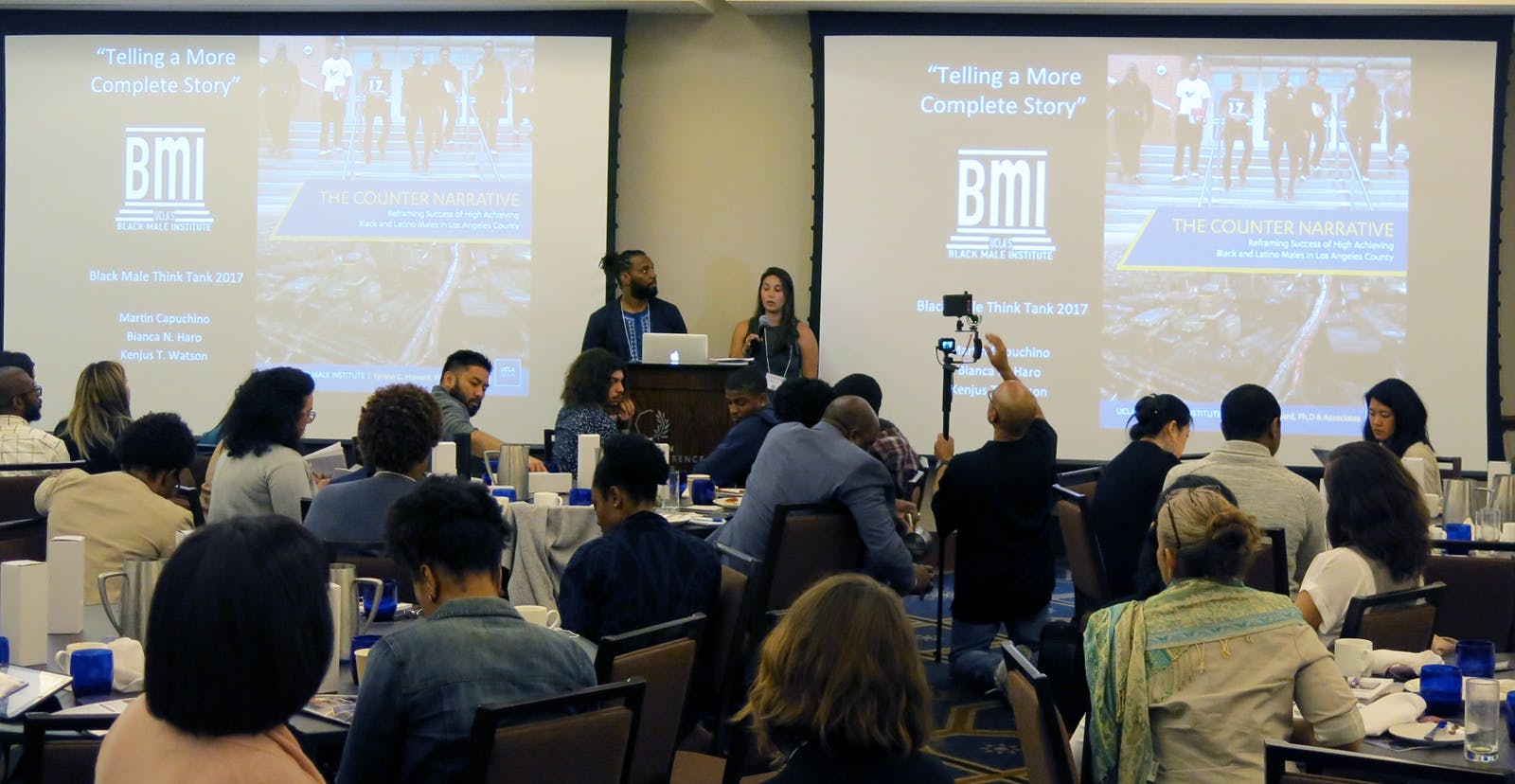Martin Capuchino is a UCLA undergraduate who while in high school, took part in the Counter Narrative Project, a study conducted by graduate student researchers in the University’s Black Male Institute. The son of undocumented parents, Capuchino, who is in his second year as a political science major and minors in education, said that taking part in the study gave him a greater sense of self.
“What made me participate in the study was knowing that for once, my voice was going to be heard and my story was going to be told, as opposed to someone else telling it for me,” he said at the BMI’s 9 annual Think Tank event, held at UCLA’s Luskin Conference Center on May 24. “My father worked 12 to 14 hour shifts every single day, just to make sure we had food on our plates, a place to live, and clothes on my back, everything. It was empowering to know that people wanted to know that we succeed – that people in my community who have it a lot worse than I do, are able to make it to places like UCLA.”
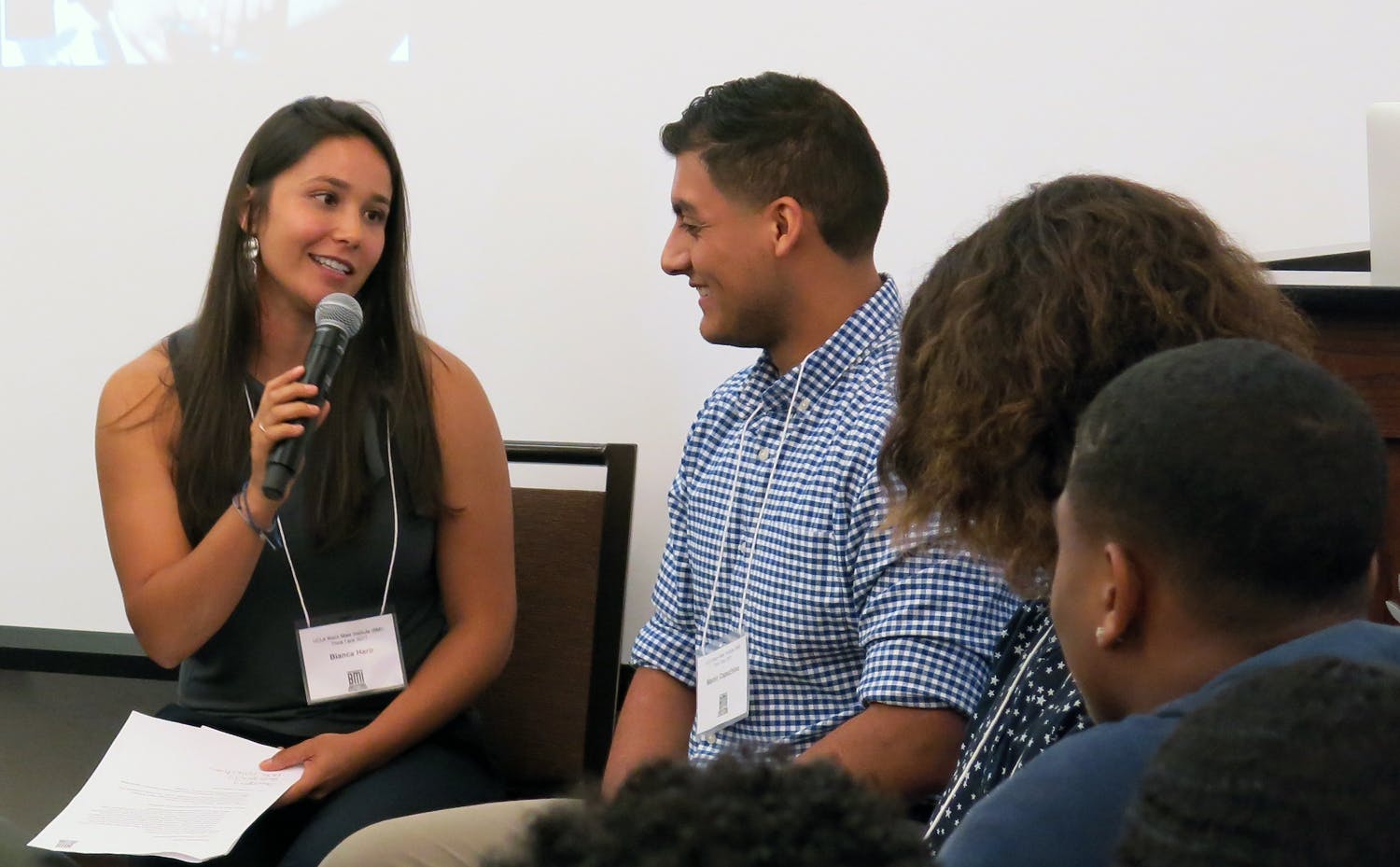
The Counter Narrative Project, which seeks to replace the stereotype of at-risk males of color with stories of their academic and personal success, is just one research effort by the BMI at UCLA’s Graduate School of Education & Information Studies. Led by Tyrone Howard, BMI’s founder and executive director, the institute explores the trajectories of Black and Latino male youth, giving UCLA undergraduates and graduate students the opportunity to do on-the-ground research on students like themselves. This year’s Think Tank presented the research of Professor Howard’s students and colleagues in their examination of the school-to-prison pipeline and BMI’s recent “Counter Narrative” study, which showcases the redefinition of success for young men of color in underserved communities.
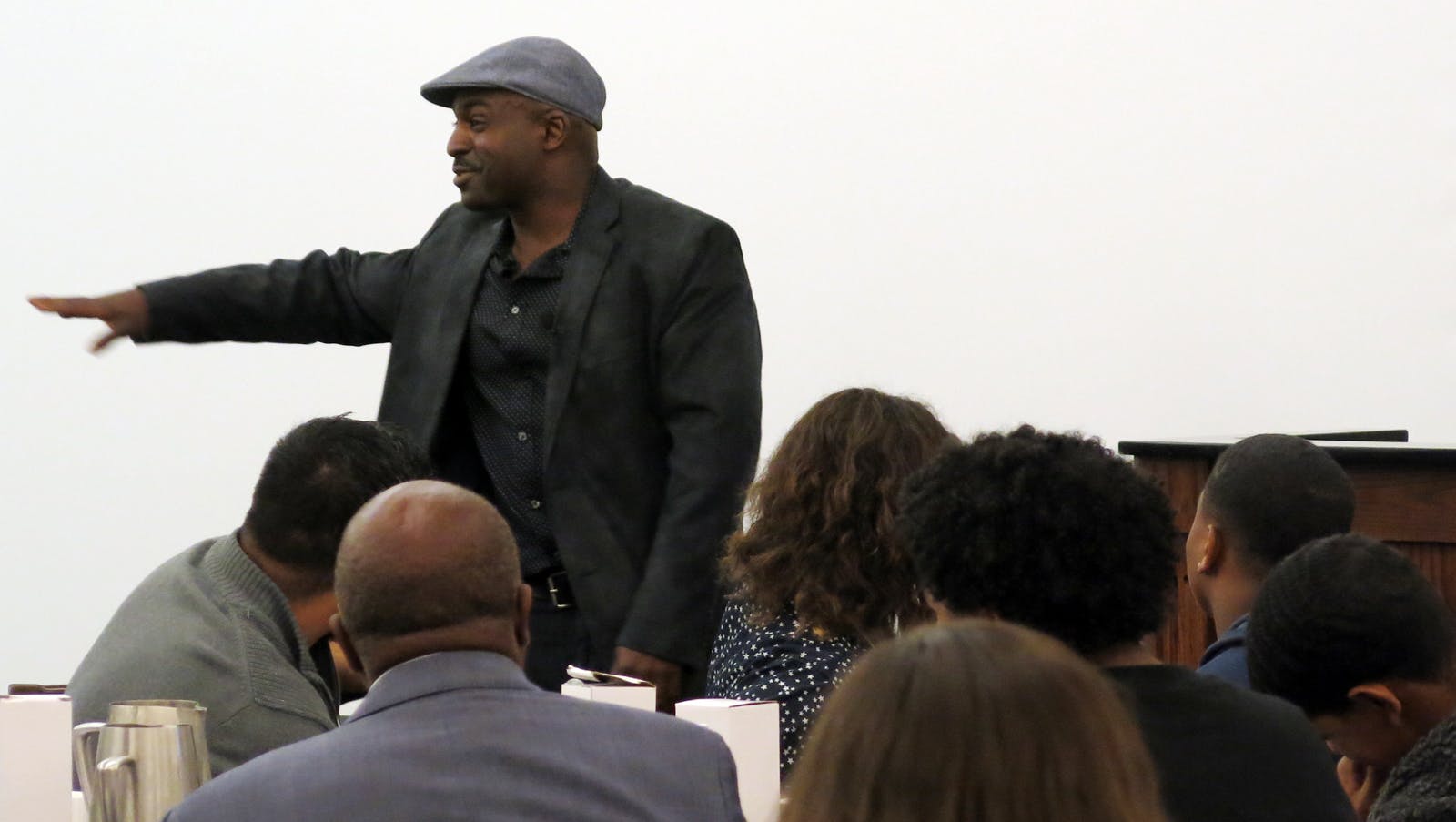
“What we’ve been able to do with BMI is to set up a pathway where these young people can engage in culturally responsive research – research around the topics that are most important to them, asking questions that are germane to their families and their neighborhoods,” said Howard to the attendees gathered at the UCLA Luskin Conference Center on May 24. “What some of these students realize is that [with] the slightest twist of fate, the very folks we’re talking about could be here and they could be there. There aren’t six degrees of separation but half a degree of separation between the young minds on this campus and the young minds we see behind bars.”
Prison activist, poet, and educator Bryonn Bain delivered an opening keynote at the Think Tank, interspersing his own poetry with moving excerpts of work by prisoners and the creation of live spoken poetry by the Think Tank audience. Bain also shared his work in prisons across the nation with individuals who were working on undergraduate and graduate degrees while incarcerated.
“I think about education as being a tool for liberation, I think about education being tied to the black liberation struggle, the black freedom tradition, the black struggle for revolution and change in this country,” said Bain. “I start from that place identifying our work to liberate our young folks who are mentally incarcerated as part of this long abolitionist tradition, which doesn’t mean we should shut down all the prisons immediately, although that might not be a terrible thing. But It does mean we identify the systems in place now that have taken 2.5 million people who are incarcerated more than any people in history.”
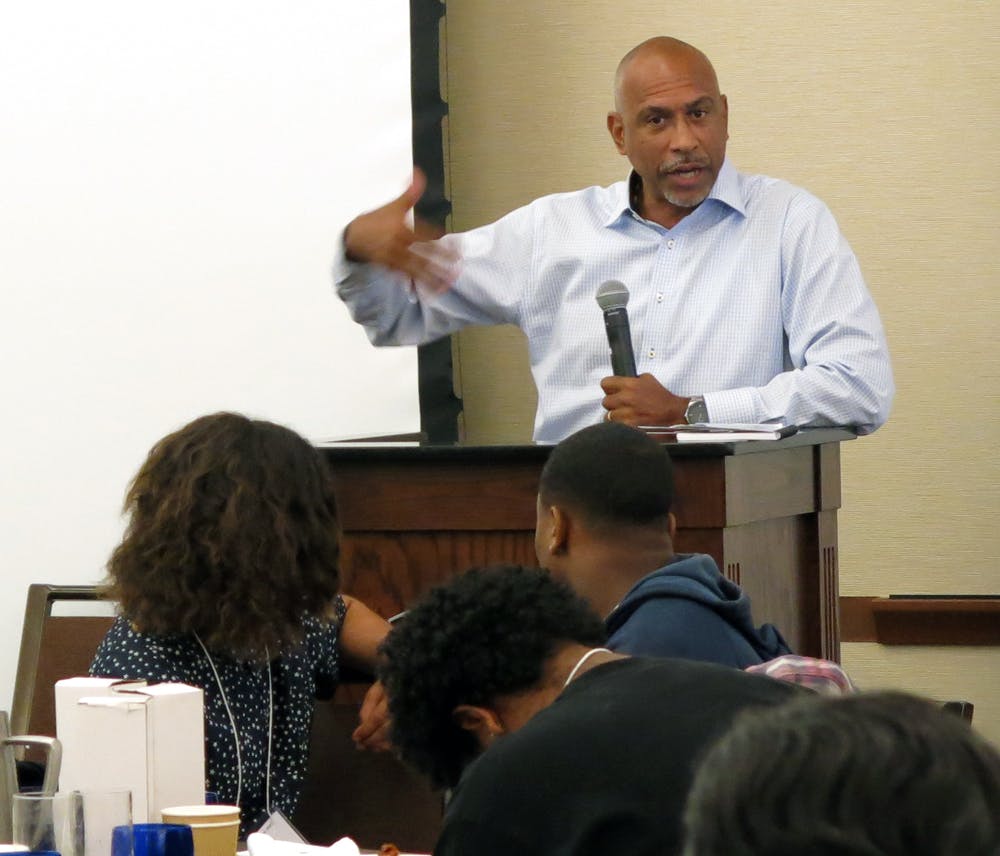
Bain underscored the “deep injustice” of sentences like “177 years or life” for youth who are incarcerated.
“Even before [young men’s] brains are fully developed, we’ve allowed a legal system to be in place that denies the possibility of redemption,” he noted.
The reach of BMI extends to Black female students as well. Samarah Blackmon, associate director, was instrumental in establishing student-initiated courses Sister-2-Sister and Blacklimated, which are focused on the retention of UCLA undergraduates.
“We do research but we do practice,” says Blackmon, who earned her Ph.D. in UCLA’s Division of Urban Schooling. “It’s a labor of love in the sense that we are fully committed to making sure that once you get here, you graduate from here. We’re finding that the work we do makes a difference. Students who participate in our classes are having a more enriched college experience and are graduating.”
Undergraduate researchers presented their work related to female students of color, including Joanna Navarro, who spoke on “Quantitative methods: Assessing the impact of Blacklimated and Sister-2-Sister through sociodemographics, academic performance, and questionnaires,” and Khadejah Ray, who shared her perspectives on “BLACK SUPERWOMAN: Juggling Self-care, Academics, and Student Leadership.”
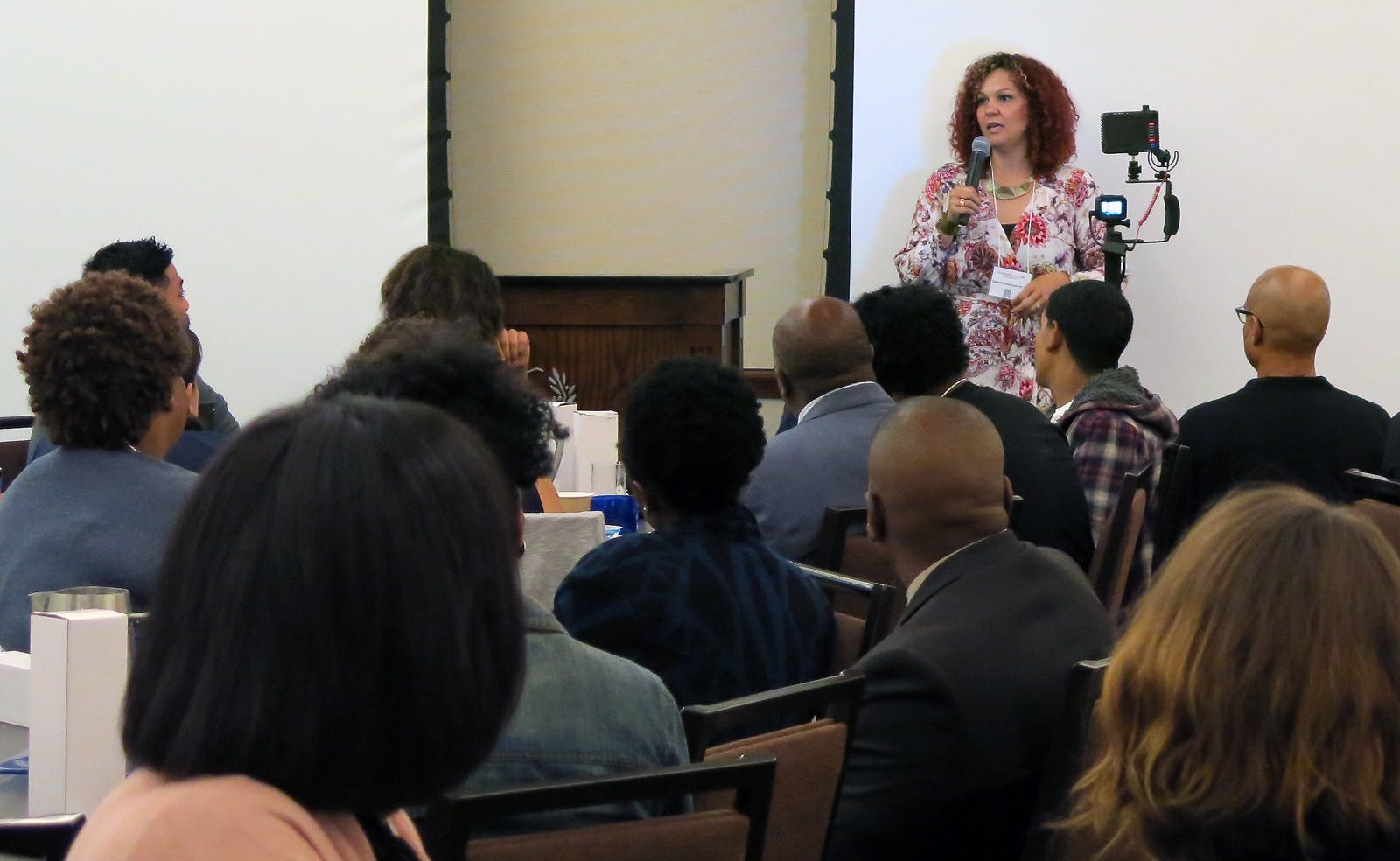
BMI graduate student researchers Bianca Haro and Kenjus Watson presented their findings for the Counter Narrative Project, which seeks to bring an unprecedented lens to studies on Black and Latino higher education, particularly for young males. The Counter Narrative’s anti-deficit framework is based on a study by Professor Shaun Harper, who conducted research on “Succeeding in the City” while at the Penn Graduate School of Education.
“It’s all about why we do so poorly, why do so many of us drop out, why so few of us go on to college; why the ones who get there are so disengaged, and so on,” said Harper in a video presentation, of the prevailing focus of the scholarship on young males of color. “That’s what led me to begin to study Black issues in higher education from a different perspective – not just reinforcing what are the realities of often racist and non-supportive campus environments.
“For me, a more fascinating question was how is it that some Black students, despite the complexities of those environment, how is it they manage to do well? What resources do they use, and who are the supportive persons [among] their peer groups as well as faculty and staff on these various campuses that enable these students to succeed?”
Watson and the research team found some commonalities among the young men surveyed for the Counter Narrative Project, including having parents with bachelor’s degrees, self-definitions such as “hard-working,” “kind,” and “loving,” and the perception of “happiness” as good family environments, and community engagement more than financial gain.
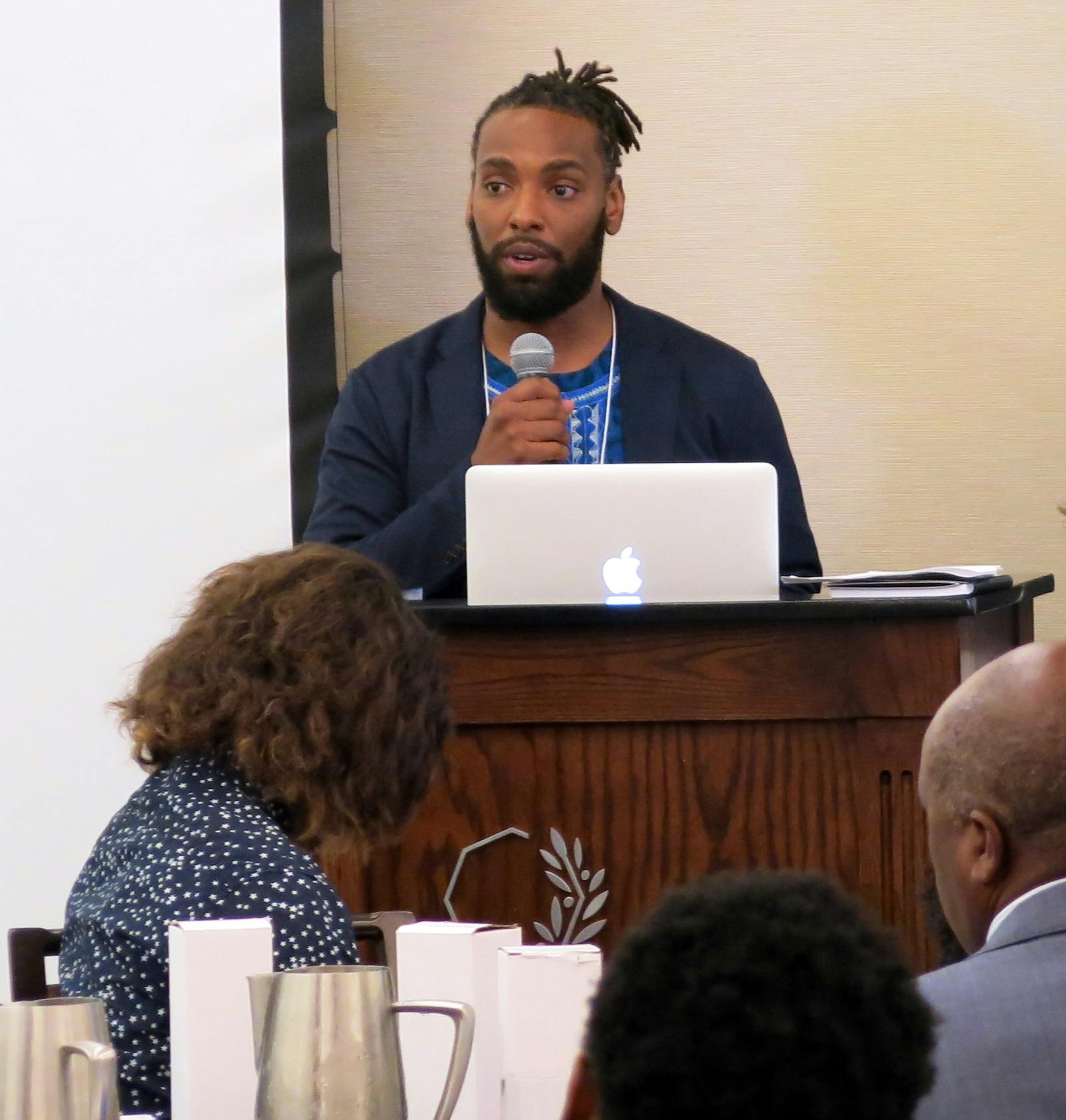
“We think it’s really important that success is not only understood as having a certain GPA, going to certain kinds of schools, and attempting certain kinds of careers; but that success can mean a lot of different things to different folks,” said Watson. “We should acknowledge, just as we do with our families and people in our lives who are not in this room, the ways they continue to live humane, loving, and caring lives.”
Haro, who was the only female researcher on the Counter Narratives Project, noted that a strong female role model, including mothers, sisters, and grandmothers, often figured prominently in the young men’s stories. She also observed a strong college-going culture at the high schools the young men attended.
“At my school site, the college center was that school culture of success,” Haro said. “You would walk in there and see fliers from universities, CSUs, community colleges, Ivy League [institutions]. Toward the end of the year when students were getting accepted into colleges, the counselor would put up their pictures and letters of acceptance.”
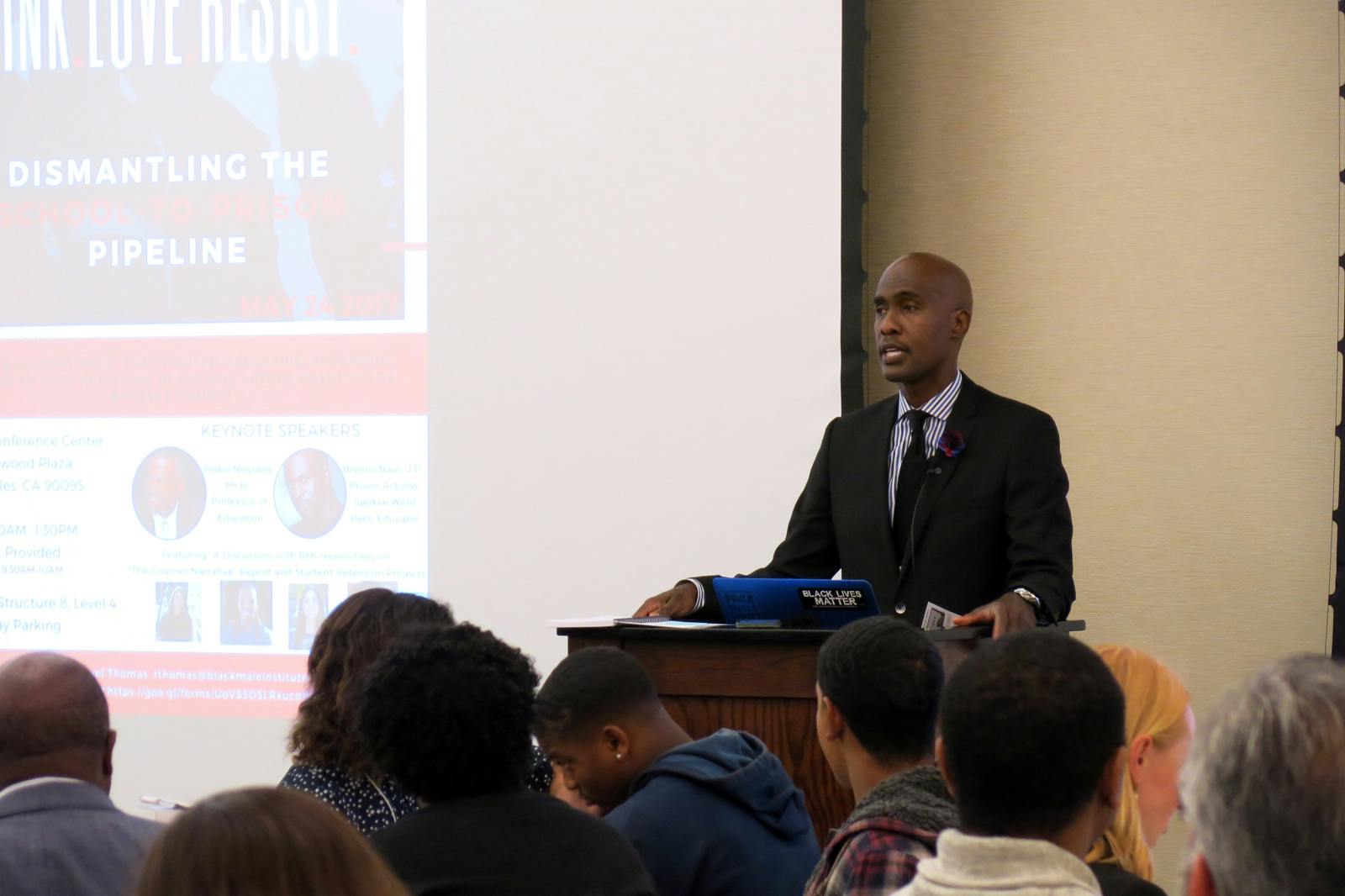
Watson and Haro said that the findings of the Counter Narrative Project challenge the stereotypes of masculinity for Black and Latino males.
“We should assume that individuals are complex… human beings,” said Watson. “When we don’t do that, we’re continually dehumanizing – when we try to fit folks into these boxes that have been defined over centuries.”
Professor Noguera’s keynote highlighted some of the ways that schools contribute to the school-to-prison pipeline. He shared the story of a Black principal who relied on traditional punishments rather than intervene to keep a student out of trouble and ultimately, out of prison.
“I want to acknowledge that behavior is a problem and anyone who has taught knows that you can’t teach a class if someone is acting out, especially if they are threatening other students,” he said. “I know thousands of teachers and administrators who… do not think through the consequences of their actions, in part because of the law, and the way zero tolerance policies have been drafted, but also in part, because there is such a lack of creativity – that is, in many of our schools we focus on the behavior but we do not address the cause of the behavior.”
Noguera pointed out that “weak relationships between adults and kids, that schools are more vulnerable. One of the findings about… mass shootings that occurred at schools was that the kids knew what was going on, but the adults didn’t. The weak relationships… not only create a situation of anonymity, but a situation where threats and threats related to violence go unaddressed.” He also underscored the inequities in school discipline.
“The disparities show up … in the ways that we treat children and the kinds of punitive discipline that we use in schools,” he noted. “What is it about being Black, Latino, and male but especially Black, that results in these higher rates of suspension and incarceration? We know that the patterns in schools mirror the patterns we see in society. The people who are… marginalized in our society are marginalized in our schools.”
To read the report, “The Counter Narrative: Reframing Success of High Achieving Black and Latino Males in Los Angeles County,” click here.
